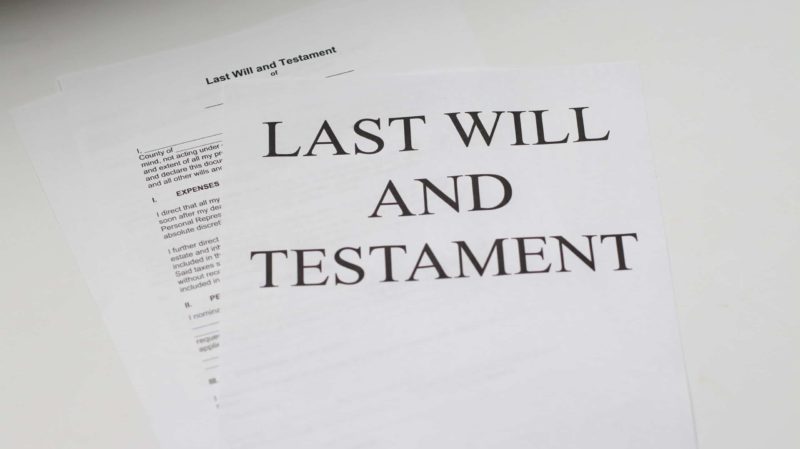When creating an estate plan, many individuals contemplate their goals as limited to the transfer of wealth to family members, their charitable intentions, or succession planning for a closely-held business. Oftentimes these families work throughout their lives to reduce taxation at the individual level through meticulous tax planning, only for their heirs to be faced with a 40% reduction of their inheritance due to estate tax. While taxation at the individual level is impossible to entirely circumvent, the estate tax can be reduced or eliminated with some proactive planning. Estate tax mitigation should be top of mind for every high-net worth family before the federal lifetime exemption is reduced by half in tax year 2025.
Use it or Lose it
The 2022 federal lifetime gift and estate tax exemption is $12.92m per individual ($25.84m per married couple) and is scheduled to reduce by approximately half in 2025. Accordingly, an individual taxpayer who dies this year with an estate worth 12.06m or less won’t be subject to any estate tax. Conversely, taxable estates in excess of the lifetime exemption are subject to estate tax at the flat rate of 40%. When the decrease in exemption occurs, known as the sunset, estate tax ramifications may be severe for those who do not utilize their lifetime exemption at its presently high level. Secure an efficient tax mitigation strategy for when – not if – the sunset arrives.
Taxable Estate Reduction Strategies
Spousal Lifetime Access Trust
Usage of the Spousal Lifetime Access Trust (SLAT) has increased exponentially since 2017 when the Tax Cuts and Jobs Act (TCJA) doubled the lifetime estate tax exemption to what it is today. Many taxpayers want to reduce their taxable estate, but are hesitant to make an irrevocable gift in case they need access to those assets later in life. The SLAT allows an individual to use their lifetime exemption to make a tax-free, irrevocable gift to a trust for the benefit of their spouse. The assets gifted are permanently removed from the taxable estate, while still allowing backdoor access to the funds through the spouse. Married taxpayers who want to fully utilize their combined exemption may even create reciprocal SLATs. Each spouse would use the entirety of their exemption to create a trust for the benefit of the other. Under current law, over $25m of assets could be shielded from the estate tax system in this scenario. When drafted and executed properly, a SLAT is an effective method of transferring wealth tax-free to future generations. Among other caveats, a SLAT must be carefully executed to ensure one does not unintentionally disinherit themself from their own assets in the event of a divorce. It is important to consult with an estate attorney before making use of this compelling strategy.
Intentionally Defective Grantor Trust
The intentionally defective grantor trust (IDGT) allows an individual to make an irrevocable gift to a trust while continuing to pay income tax on the assets. An IDGT, when drafted as a grantor trust, is considered a disregarded tax entity. Therefore, the IRS does not differentiate between the individual taxpayer and the trust itself. The IDGT’s unique tax treatment allows the taxpayer to remove the trust from their estate while the assets remain taxable to them, thereby making it “defective” at the income tax level – but not at the estate tax level. This feature allows the assets to compound over time unencumbered by the comparatively higher trust tax brackets. An IDGT can also be used in conjunction with the succession plan of a family business. Similarly to gifting assets to the trust, one may gift business interests to grow tax-free outside of their taxable estate for eventual transfer to the next generation.
Irrevocable Life Insurance Trust
An irrevocable life insurance trust (ILIT) allows an individual to transfer ownership of an insurance policy to a trust to be held outside of the estate. Upon the death of the insured, the proceeds are paid to the trust for the benefit of the beneficiaries rather than being included in the insured’s taxable estate. The annual gift tax exclusion, not to be confused with the lifetime exemption, allows taxpayers to make tax-free gifts up to $16k (2022) per recipient each year. While lifetime additions to a trust would not generally fall under the annual gift tax exclusion, an exception to this rule is possible when drafted with the correct trust language. By including specific language allowing the beneficiaries the right to withdraw trust assets under limited scenarios, the insured can further reduce their taxable estate by making annual tax-free gifts to the trust under annual exclusion rules. These additions to the trust can be used to pay the premiums due on the insurance policy. An ILIT is an especially unique estate planning tool because it allows estate tax to be avoided on assets passing to non-spouse beneficiaries even without the insured using their lifetime estate tax exemption to fund the trust. Individuals must work with a tax professional to avoid the pitfalls associated with this strategy, one such limitation being the “three-year rule.” If an individual does not live for a minimum of three years after the date of transferring an insurance policy to an ILIT, the policy will be included in their gross estate. Careful tax planning should be done to avoid inadvertently negating the benefits of this strategy.
The Sunset is Imminent
The increased lifetime exemption set forth by the 2017 TCJA was never slated to be permanent. While much speculation has occurred in recent years on whether new legislation could cause the exemption to revert back to its pre-TCJA level early, the reduction will take effect in tax year 2025 as the law stands today. Families who may be impacted by the 2025 sunset should take action now to reduce the potential impact to their estate plan. Work with a legal professional today to discuss how to protect your family’s legacy from the inevitable – yet preventable – impact of estate taxation.
Important Disclosure Information
Please remember that past performance is no guarantee of future results. Different types of investments involve varying degrees of risk, and there can be no assurance that the future performance of any specific investment, investment strategy, or product (including the investments and/or investment strategies recommended or undertaken by Waldron Private Wealth [“Waldron”), or any non-investment related content, made reference to directly or indirectly in this commentary will be profitable, equal any corresponding indicated historical performance level(s), be suitable for your portfolio or individual situation, or prove successful. Due to various factors, including changing market conditions and/or applicable laws, the content may no longer be reflective of current opinions or positions. Moreover, you should not assume that any discussion or information contained in this commentary serves as the receipt of, or as a substitute for, personalized investment advice from Waldron. Waldron is neither a law firm, nor a certified public accounting firm, and no portion of the commentary content should be construed as legal or accounting advice. A copy of the Waldron’s current written disclosure Brochure discussing our advisory services and fees continues to remain available upon request or at www.waldronprivatewealth.com. Please Remember: If you are a Waldron client, please contact Waldron, in writing, if there are any changes in your personal/financial situation or investment objectives for the purpose of reviewing/evaluating/revising our previous recommendations and/or services, or if you would like to impose, add, or to modify any reasonable restrictions to our investment advisory services. Unless, and until, you notify us, in writing, to the contrary, we shall continue to provide services as we do currently. Please Also Remember to advise us if you have not been receiving account statements (at least quarterly) from the account custodian.






